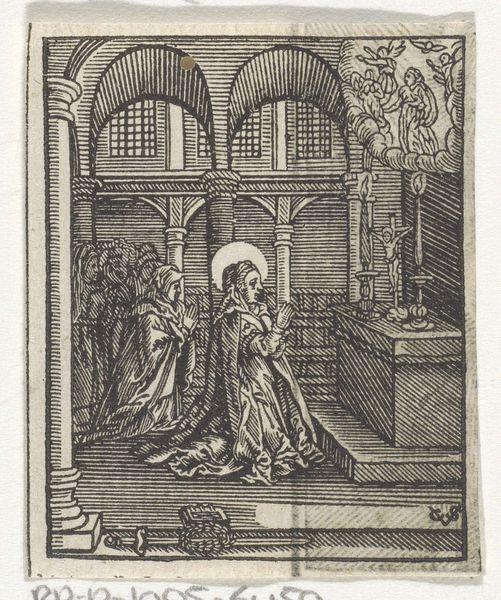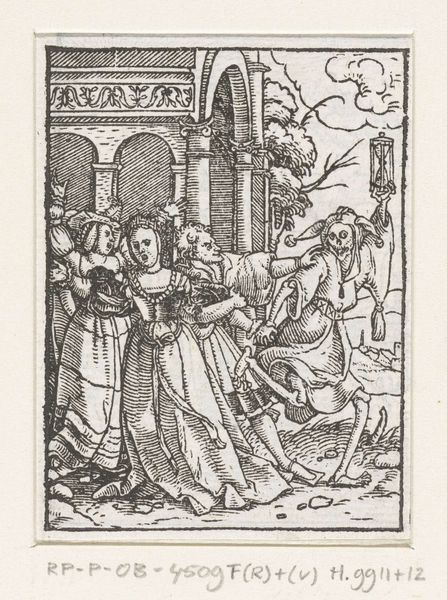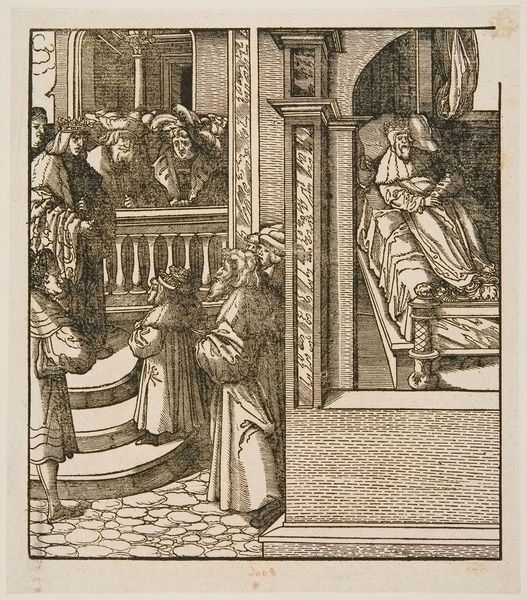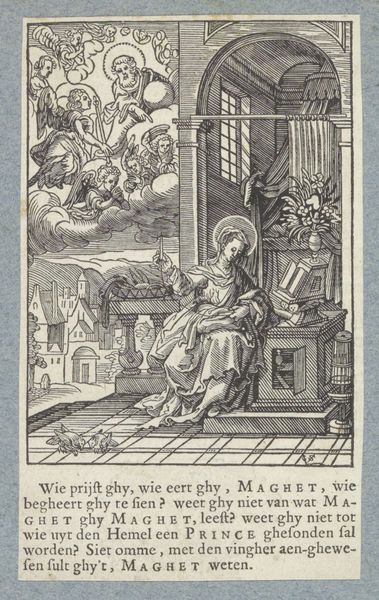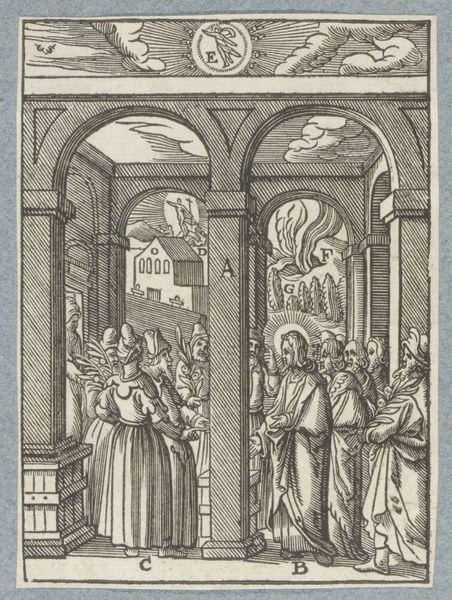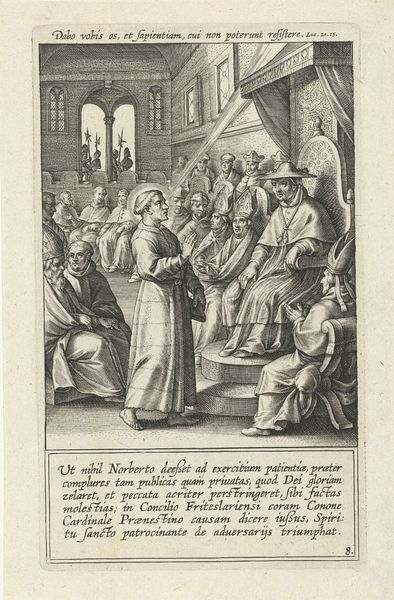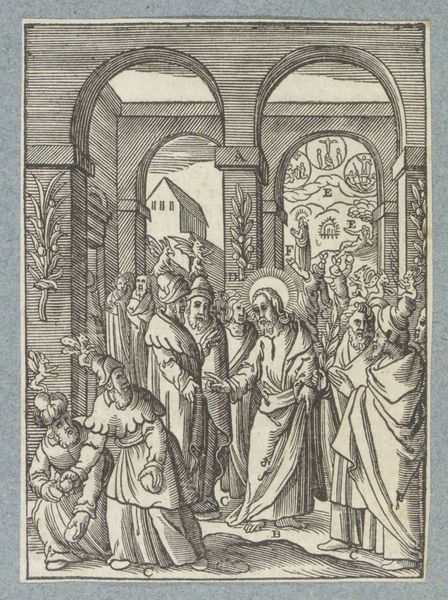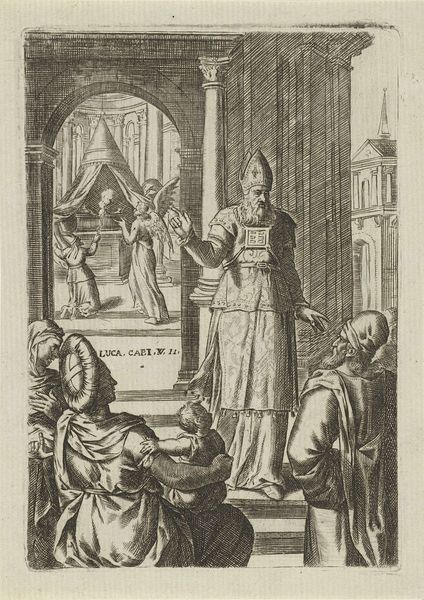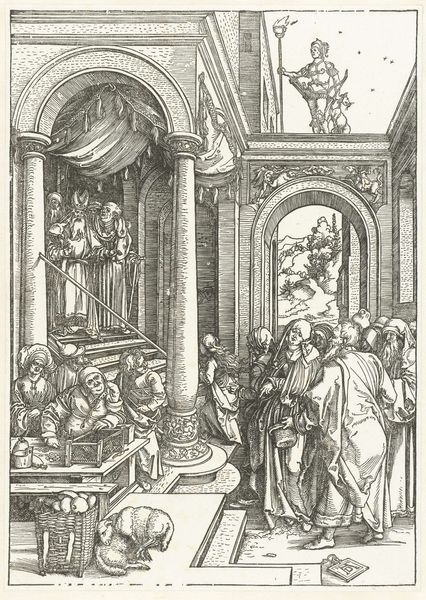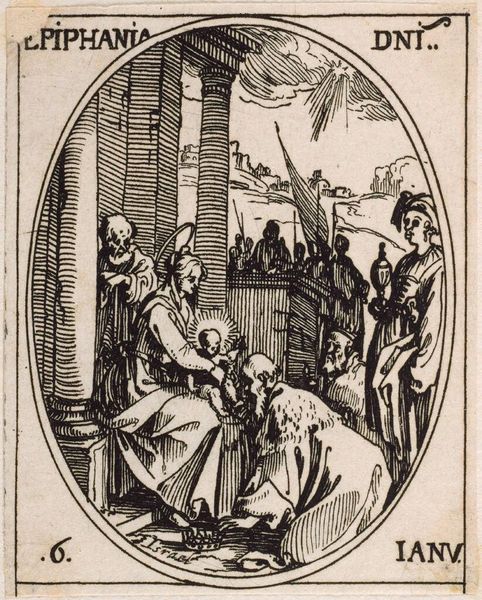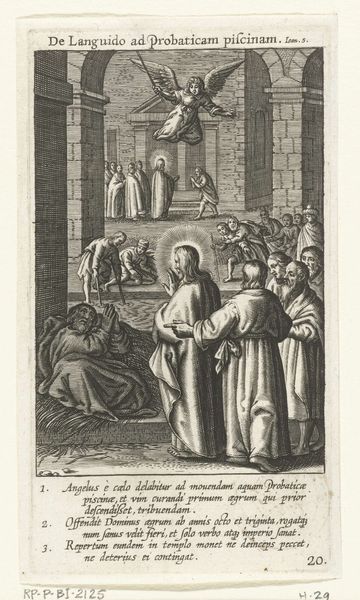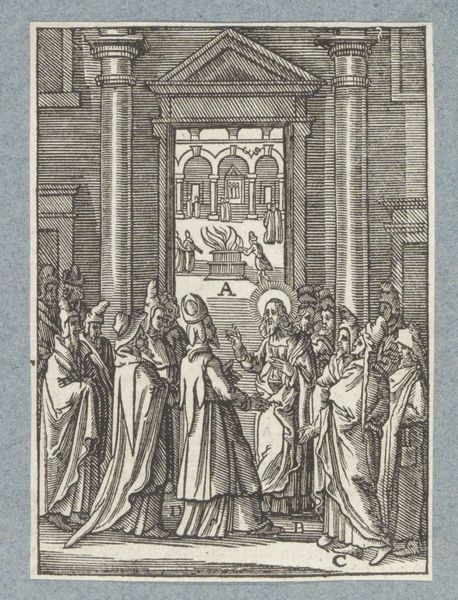
drawing, print, ink, engraving
#
drawing
#
narrative-art
#
baroque
#
pen drawing
#
dutch-golden-age
# print
#
figuration
#
ink
#
genre-painting
#
history-painting
#
engraving
Dimensions: height 85 mm, width 45 mm
Copyright: Rijks Museum: Open Domain
Curator: Good afternoon. We are now looking at “Hippocrates Writing His Aphorisms,” a pen drawing in brown ink by Hendrik Bary, dating from around 1666. Editor: It feels like a scene captured in amber, all those figures rendered with such precision, caught within that striking architectural space. Almost theatrical. Curator: The drawing offers us an intimate glimpse into a historical narrative. Bary's Baroque style, common during the Dutch Golden Age, is clearly present, particularly in the detailed rendering of figures and dramatic perspective. But how do you see that Baroque influence specifically? Editor: It's in the ornamentation of the architectural elements and in that theatrical staging, definitely, but there is also that dramatic contrast between light and shadow, giving the entire scene an intensity. I can almost feel the weight of the scene on my chest. What a contrast between Hippocrates, illuminated and assured, versus the suffering visible just behind him. Curator: Yes, note how Bary positions Hippocrates in the foreground, almost dominating the scene. Around him, in various states of illness and health, the scene could represent the conditions which formed the collection of medical wisdom. This work would likely have found its audience amongst the growing literate population interested in science and classical knowledge, promoted in this accessible medium. Editor: I see it. The sick almost become props or elements that set the stage for this historical scene. Did he actually believe this scene resembled a historical reality, do you think? Curator: Whether Bary intended historical accuracy is open to question. As historians, we need to ask who commissioned it, who was Bary trying to appeal to, and to understand the history of images as cultural tools of understanding during this time. In some ways, these depictions shaped later thinking on such historical events just as much as documentation. Editor: That is a thought, indeed! Ultimately, Bary’s image captures the tension between life, death, knowledge, and experience. This single, bustling snapshot still raises vital questions in me today. Curator: For me, the drawing serves as a bridge connecting art, science, and society of the 17th century. I hope our listeners leave with a curiosity to explore more of the Dutch Golden Age.
Comments
No comments
Be the first to comment and join the conversation on the ultimate creative platform.
